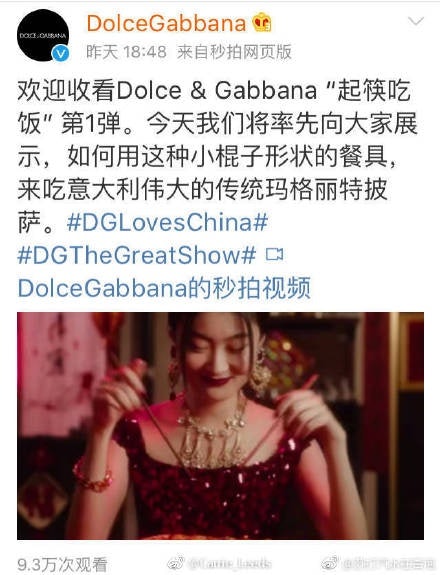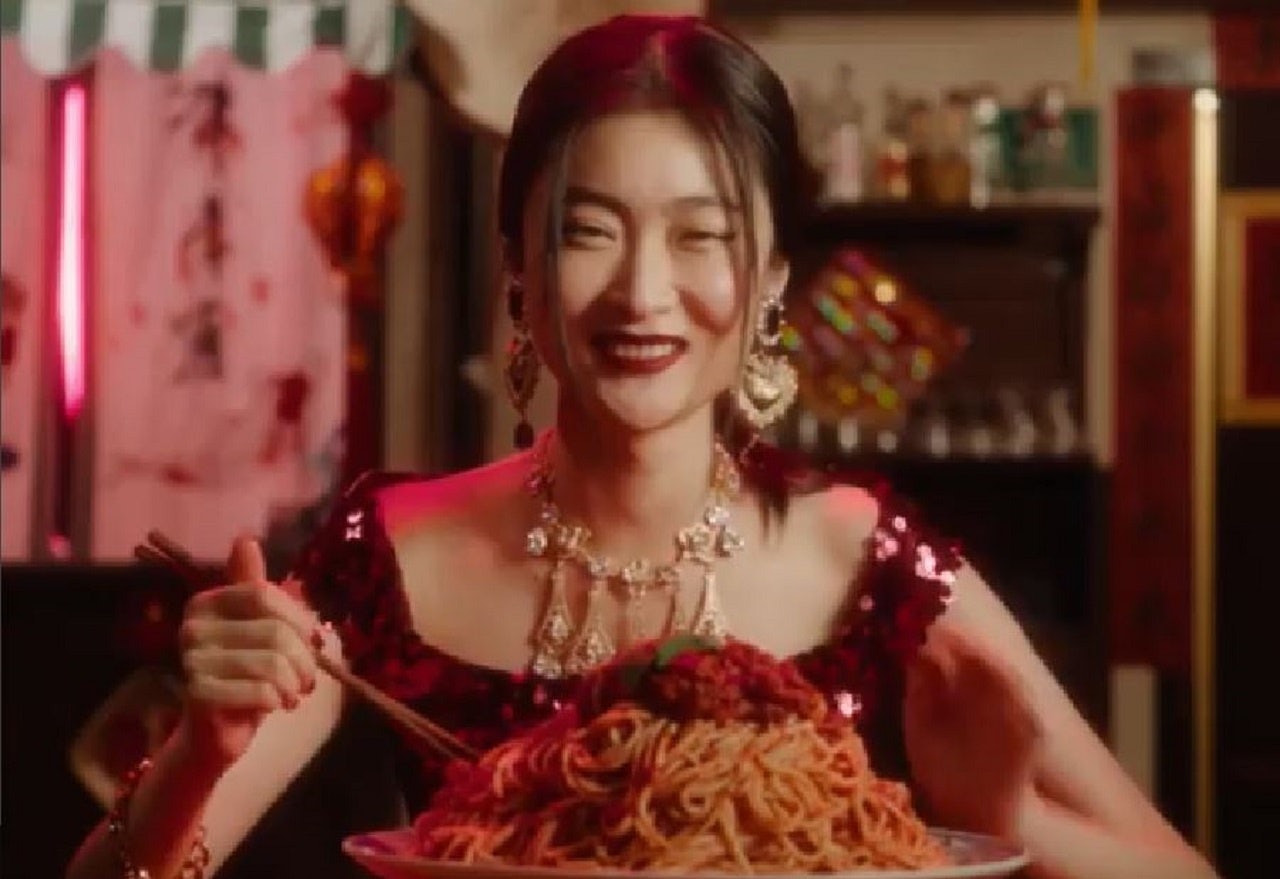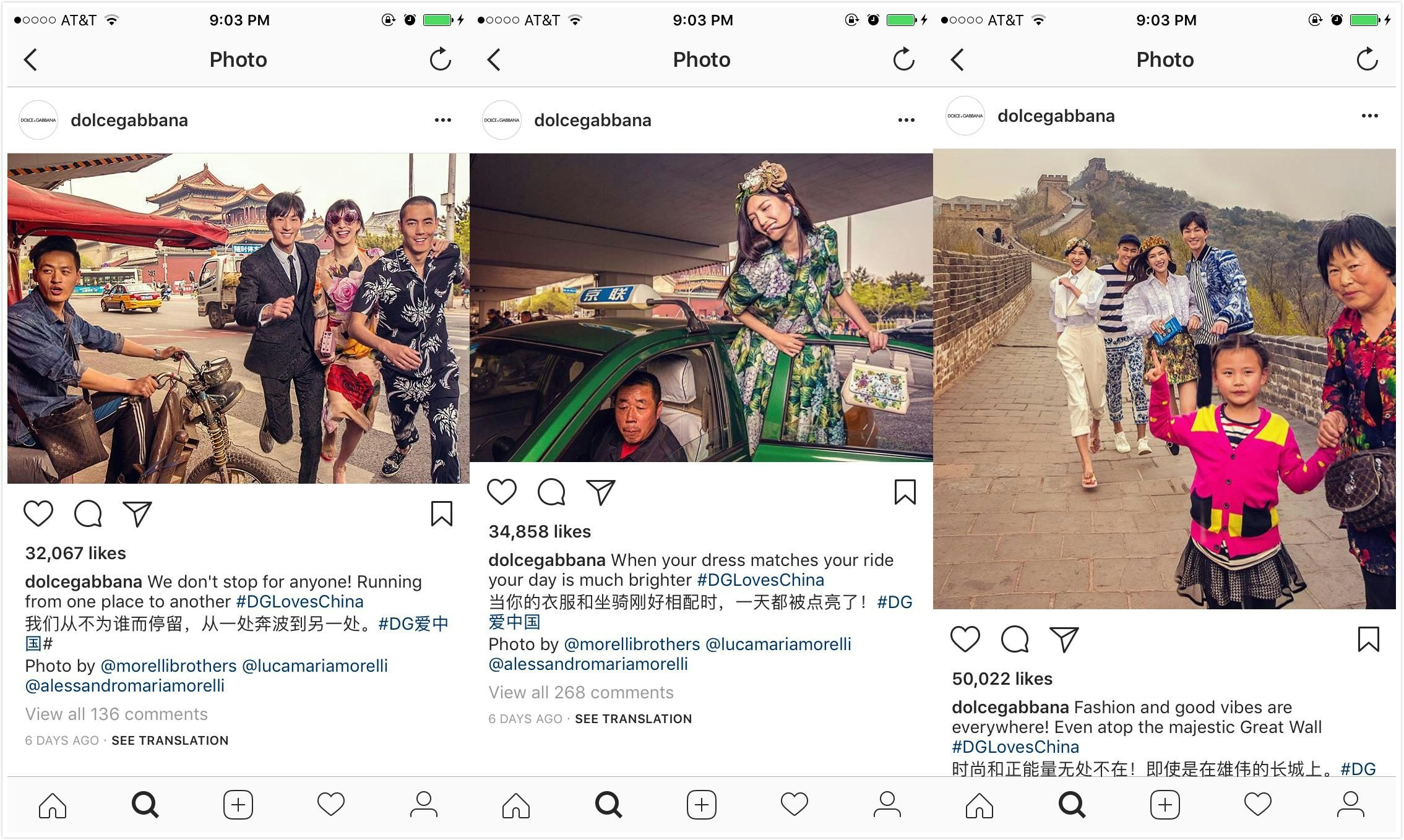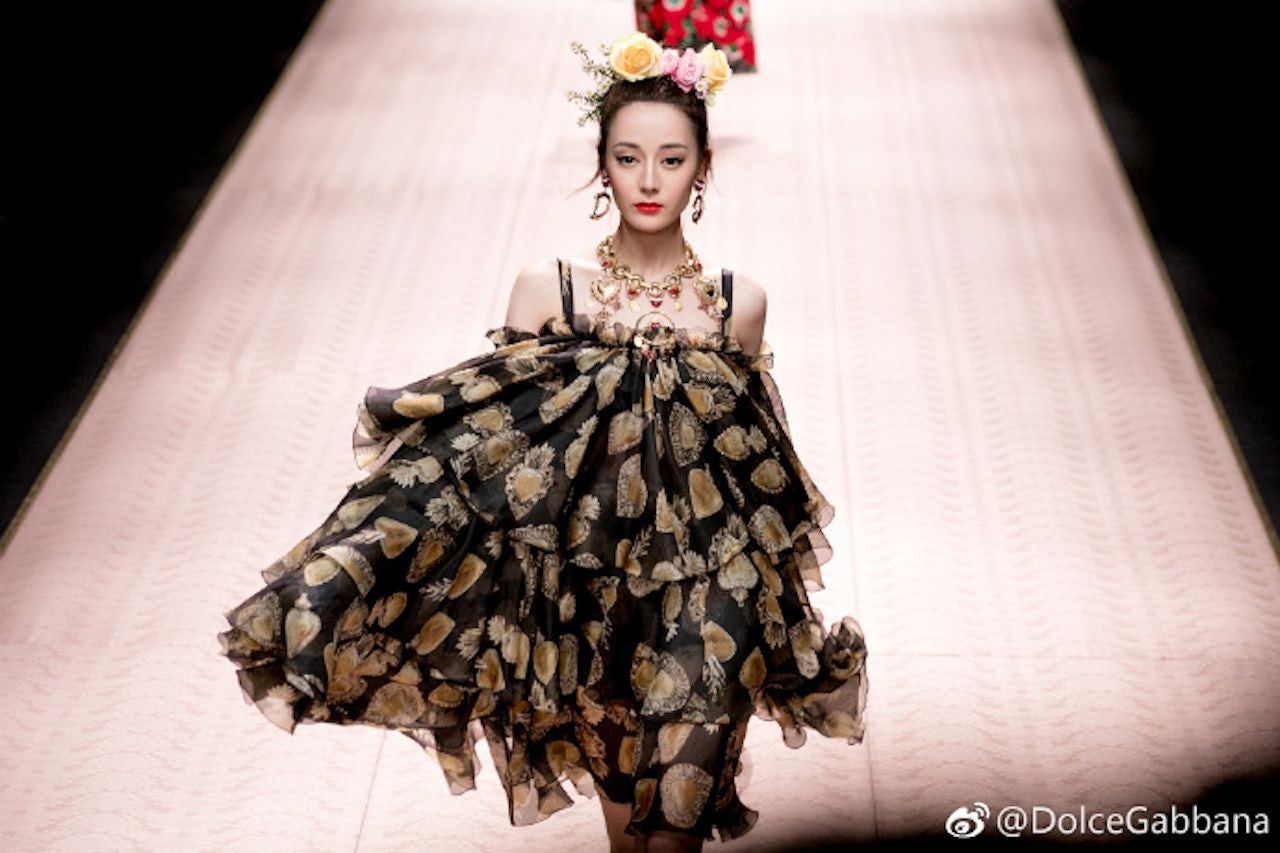Updated: Dolce & Gabbana was forced to cancel its first fashion show in Shanghai after its online marketing campaign that was deemed racist by Chinese social media drew the attention of the Chinese government. Read the full story here.
“Chopsticks? Really?”
It looks like, as luxury brands increasingly reach out to China to secure sales, big mistakes in tone and taste are being made.
Italian fashion powerhouse Dolce & Gabbana’s latest “DG Loves China” online marketing campaign, an elaborate initiative meant to pay tribute to the country and its consumers, has come under fire for trivializing China’s centuries-old culture and depicting Chinese women in a stereotypical and even racist way.

On Saturday, November 18, D&G released a now-deleted post on China social media platform Weibo to promote its upcoming runway show in Shanghai (on November 21), with hashtags #DGLovesChina# and #DGTheGreatShow#. In that and related videos, a young Asian model in a red sequin D&G dress appears to have trouble eating Italian foods such as pizza, pasta, and cannoli with chopsticks but finally figures it out. In a particularly garish error in tone, in the video featuring cannoli, a male narrator asked the model “is it too huge for you?”
Many social media users in China labeled this video stereotypical, racist and disrespectful for Asian female upon its release. The anger has spread so quickly across the platform that Dolce & Gabbana deleted the post featuring the video less than 24 hours after its release (a move that seemingly addressed concerns by some they had launched a bad-taste campaign on purpose.) But that has not calmed down the angry crowd at all. On Weibo, “Boycott Dolce” has been discussed over 18,000 times. Some users have asked that an apology to be issued—in both Chinese and English.
Many Chinese consumers flocked to the brand’s official Instagram account (a platform blocked in mainland China), which still features the videos, to complain about the ads and defend their culture.
One user named “happyklause” wrote “Well, why do you think you have the right to teach Chinese how to use chopsticks in the rudest and inappropriate way? Really chopsticks? You really wanna play that word?” Another one “yuhanzhao_eunice” followed, “you should be respectful if you want to make money from Chinese.”
On Weibo, a user called “manchengkuangzao (满城狂草)” summarized key points why this campaign ad was viewed as racist and discriminatory by a Chinese audience. First of all, the look of this Asian model – tiny eyes and childish smile - is a typical Oriental type that is understood in the Western culture. Many online users recalled an arguably racist Instagram post by supermodel duo the Hadid Sisters where they mocked Asians female last year.
Secondly, most of the Chinese cultural symbols and element like lanterns and couplets that appeared in the messy background of the video, according to this Weibo user, were outdated and stereotypical. Also, the subtitle referred to chopsticks as a “small-stick” tool while called Italian food great and tasty, which made many people feel the brand is arrogant about its cultural roots.
“It is not DG Loves China, but DG loves China’s RMB,” said a Weibo user. Some users noted even though the brand has hired some hot Chinese millennial and Gen-Z celebrities including TFBoy’s Junkai Wang and Dilraba Dilmurat to represent it, its cultural DNA and attitude about China is ill-fitted.
To note, it was not the first time for Dolce & Gabbana to get into troubles in the country on how it presented China in their advertising campaign. In April last year, the brand’s “DG Love China” campaign centering around the capital city Beijing also hit controversy for only showing underdeveloped parts of Beijing and impoverished residents, while disregarding the more modern scenes of skyscrapers and citizens who are more stylish than those featured.
According to a report by Chinese media outlet LinkShop in September last year, the Asia Pacific region made up more than 30 percent of Dolce & Gabanna's market share in the fiscal year of 2016. During that period, its profit tripled year on year after ramping up efforts in the Greater China region, the report noted.
The coveted Chinese luxury consumers, contributing significantly to luxury brands’ checkbooks in recent years, holds the future of their success, a recent report by Bain & Co showed. Any brand, therefore, cannot afford to fail this market in such a dramatic way and even for the second time.


